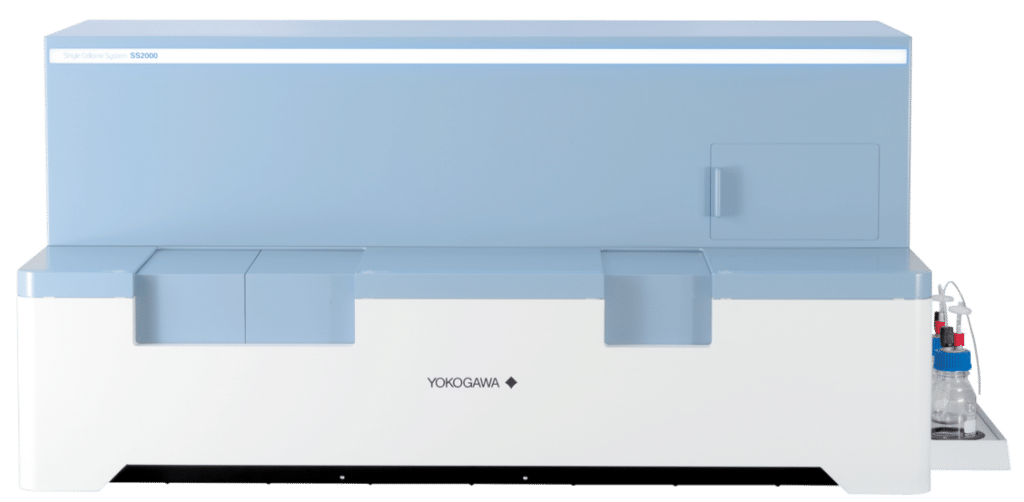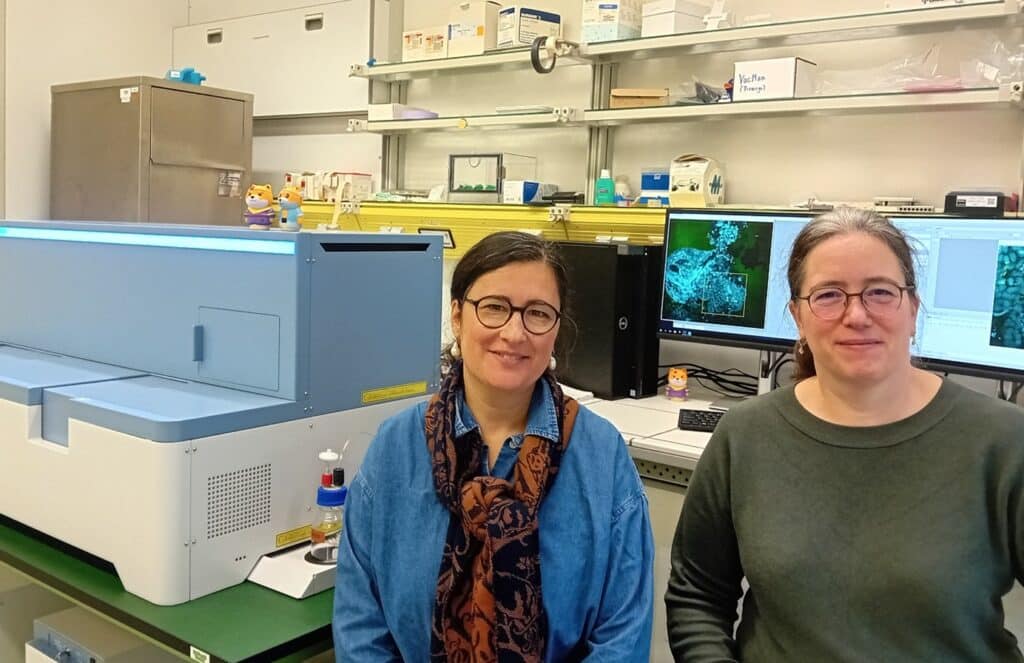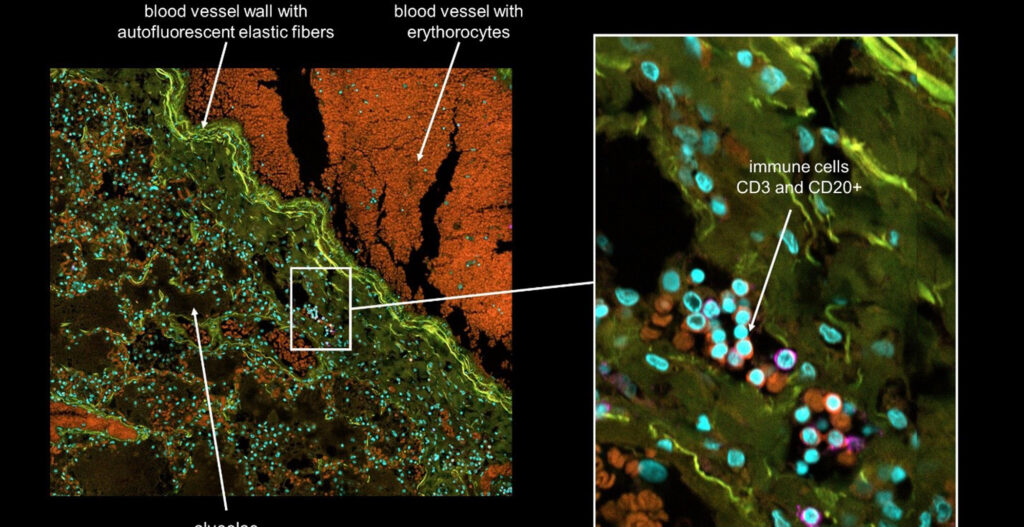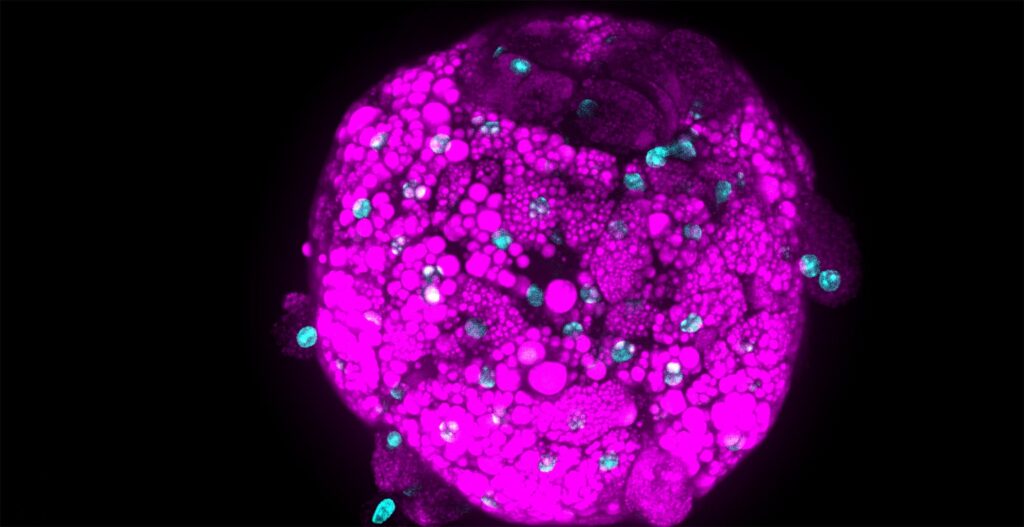
The Winner of our Single Cellome™ System SS2000 Research Equipment Grant Program
Yokogawa proudly presents the winner of our first Single Cellome™ System SS2000 Research Equipment Grant Program: The first place grant goes to the Department of Psychiatry and Psychotherapy, University Medical Center Johannes Gutenberg-University in Mainz.
Prof. Dr. rer. nat. Kristina Endres at the University Medical Center in Mainz and Prof. Dr. phil. nat. Kristina Friedland at the Institute of Pharmacy and Biomedical Sciences, Johannes Gutenberg-University in Mainz, are glad to receive the research equipment grant.
Using the SS2000 for Alzheimer Research
Prof. Endres and Prof Friedland utilize SS2000 to study Alzheimer’s disease, which is the main cause of dementia.

Why is it crucial to find a cure for Alzheimer’s disease?
- Growing Prevalence: Alzheimer’s disease is one of the most common forms of dementia, affecting millions of people worldwide. Its prevalence is increasing as the global population ages, making the search for a cure increasingly urgent.
- Impact on Quality of Life: Alzheimer’s disease significantly impacts the quality of life of both patients and their caregivers. It leads to a progressive decline in cognitive functions, affecting memory, reasoning, and the ability to perform daily tasks. Finding a cure would greatly improve the lives of those affected.
- Economic Burden: The care for Alzheimer’s patients is costly in terms of direct healthcare expenses and indirect costs such as lost productivity and caregiver time. A cure could alleviate the substantial economic burden on families and healthcare systems.
- Advancement in Neuroscience: Finding a cure for Alzheimer’s disease would represent a major advancement in neuroscience and our understanding of the brain. This could potentially lead to breakthroughs in treating other neurological disorders.
- Prevention of Disease Progression: Currently, available treatments only manage symptoms without halting the progression of the disease or have rather limited efficacy. A cure would offer a way to stop or reverse the progression, fundamentally changing the trajectory of the disease.
To find a cure, you need to understand the nature of the disease.
Research of Prof. Endres
„ I first became interested in Alzheimer’s research as an undergraduate student when my former boss and mentor, Professor Fahrenholz, offered me a project on Abeta-related proteins. I was deeply moved to learn that so many people and their families suffer from this disease and have no access to a cure. So I got involved and am still trying to change this situation.”
Prof. Kristina Endres
Prof. Endres is the head of the working group “Molecular mechanisms of healthy aging and neurodegeneration.” Her research is focused on Alzheimer’s disease regarding pathogenesis, therapy, and prevention. With her background as a technician in a pharmaceutic company and her studies in biology and biochemistry, she has a broad spectrum of techniques and expertise from both fields, industry and academia. Moving to the Medical Center of the University allowed Prof. Endres to widen her expertise into translational approaches with clinical studies as the endpoint.
In her PostDoc phase, she acquired a funding from the German ministry (BMBF) that supported her research on retinoids as therapeutics in Alzheimer’s disease. Later on, multiple University internal and third-party fundings supported the widening of her area of interest e.g., the interplay between microbiome and Alzheimer’s disease. During the projects, she successfully established collaborations with bioinformaticians, microbiologists, immunologists, and chemists, as well as medical doctors, which allowed her to publish about 90 papers until today. Her research on retinoid-based therapy was also recognized with the Hans-Jörg Weitbrecht Price for clinical neuroscience in 2015.
How the use of the SS2000 will contribute to the research
Investigating time and spatial dimensions of mitochondrial failure in microglia upon approaching amyloid plaques using the Single Cellome™ System SS2000 will help uncover mechanistic insights into Alzheimer’s disease.
Microglia are a type of immune cell in the brain that are believed to play a significant role in Alzheimer’s disease. They are linked to key features of the disease. One example of this link is how a harmful peptide, called Abeta, interacts with these cells. Abeta accumulates in the brains of Alzheimer’s disease patients, forming what are known as senile plaques. The researchers plan to grow microglia cells in a lab setting alongside these Abeta plaques, a process known as co-culturing. They will then collect samples from different parts of the microglia cells. These samples will be rich in mitochondria, which are important parts of the cell. They’ll gather these samples from areas close to the plaques, areas further away, and from cells that haven’t been near the plaques at all. This will help them understand how the disease affects these cells at a very detailed level.
The SS2000 Research Equipment Grant Program
Endres and Friedland received a Single Cellome™ SS2000 for up to 4 months, plus live training and ongoing technical support from our experts, Dr. Fredrik Wieland and Dr. David Sustr.

Prof. Endres’s group is interested in molecular pathways that interfere with the physiological and pathological processes of neuronal aging. The group analyses proteins characterized as longevity factors and/or of neuro-protective property and their potential interplay with gaining resilience. Furthermore, the group focuses on molecular mechanisms of Alzheimer’s disease, one of the major neurological diseases of the elderly.
With the help of the research grant, Endres aims to assess mitochondrial function by investigating the expression of the enzymes of the respiratory chain and mitochondrial fission and fusion markers, e.g., DRP-1 and OPA1, after sampling of mitochondria by SS2000. In addition, they investigate mitochondrial biogenesis controlled by the transcription factors PGC-1α, PGC-1β, and NRF2. We wish Kirstina Endres and her group a lot of success with their research and hope we can contribute to ensuring the well-being of all.
Please find the link to the news at Friedland lab: Allgemein | Department of Pharmacology & Toxicology (uni-mainz.de)



